Uganda Safari Tours, Where to go, What to See & More
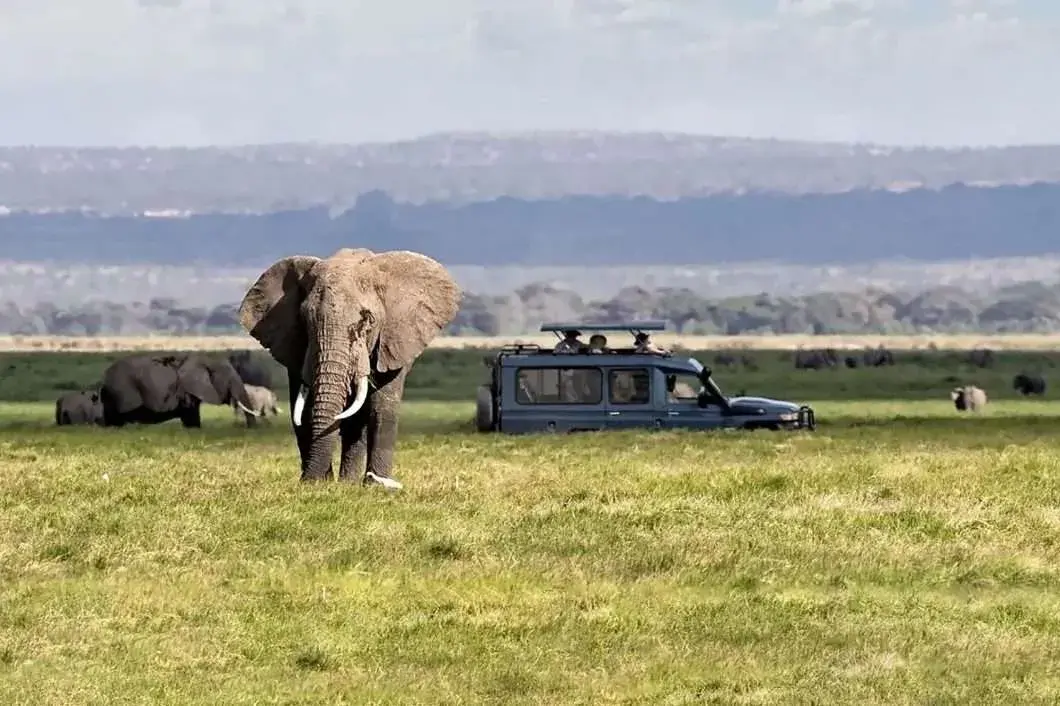
Imagine locking eyes with a mountain gorilla. Or trekking through dense forests listening to the sounds of the jungle. Better yet, cruising along the Nile spotting hippos and crocodiles. Welcome to Uganda, a landlocked gem nestled in East Africa, teeming with wildlife, adorned with rolling landscapes, and steeped in cultural inheritance.
Far from the cliched African safari, Uganda offers an intoxicating blend of wildlife encounters, cultural experiences, and beautiful landscapes that make it a unique safari destination. It’s not just a journey into the wild; it’s a voyage into a fascinating world, brimming with unique experiences at every turn. So, if you can picture yourself marvelling at powerful waterfalls, climbing snow-capped mountain ranges, or exploring the deepest crater lakes, come with us. Let’s explore Uganda.
Book Your Uganda Safari With Us
To get started on your safari to Uganda, we invite you to contact us via phone or WhatsApp at +254-704-532-105. You can also connect with us via email at safarioffers@kenyaluxurysafari.co.uk or safarioffers@ajkenyasafaris.com.
Our Senior Consultant, James Gatheru, is on hand to help you personalise your Uganda safari and maximise your experiences.
A Peek Into Uganda Safaris - Photos by Our Clients
Unveiling the Wonders of Uganda Safari: A Gateway to Pristine Wilderness
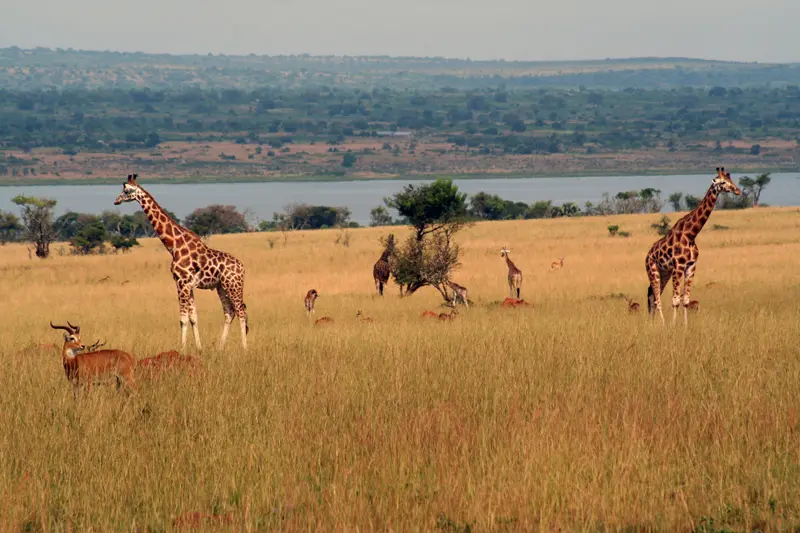
Uganda has more rainforest jungle ecosystems than the Masai Mara in Kenya or Serengeti in Tanzania, which boast vast grasslands and greater wildlife densities. The Tarzan-kind of rainforests, rife with mountain gorillas, chimpanzees, rare monkeys, and birds. Sure, you’ll see other wild animal species. Sure there are parks with savannah grassland habitats, but this is a primate country where towering trees, undergrowth, and misty forests rule.
It’s the perfect safari destination for nature lovers, wildlife (primates) enthusiasts, birding enthusiasts, photographers, adventure seekers, and cultural explorers.
A typical Uganda Safari may include:
- The classic game drives in the national parks
- Boating safaris
- Thrilling chimpanzee tracking and gorilla trekking adventures
With more than 20% of the country’s land dedicated to wildlife reserves, Uganda is home to 10 national parks, each offering unique wildlife experiences, landscape features, and adventure opportunities. If you’re not content with traditional game drives, you can strap on your hiking boots and track primates in their natural habitat. Let’s look at some of the fantastic experiences you can enjoy on a tour of Uganda.
Journeying Through Premier National Parks in Uganda
Each one of the national parks in Uganda boasts unique ecological systems, supporting an array of wildlife species, and offering distinct safari experiences. Among these, the absolute must-sees are:
Bwindi Impenetrable National Park
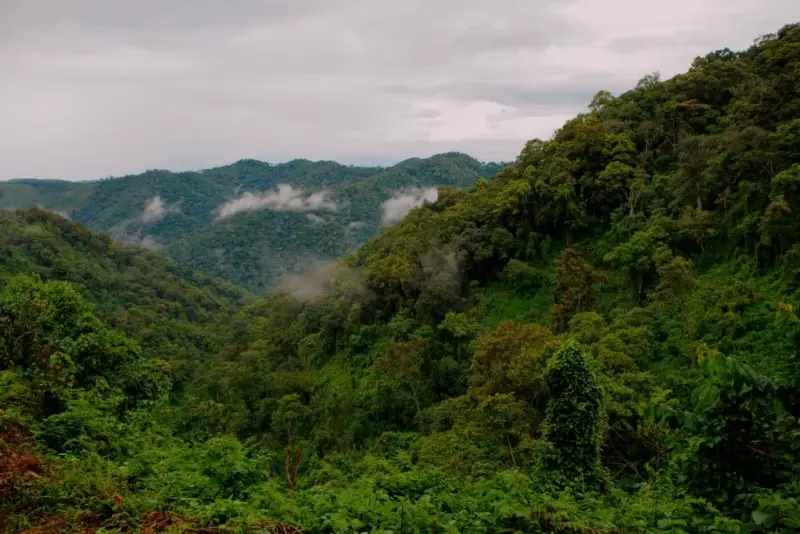
No Uganda safari is complete without a visit to the Bwindi Impenetrable Forest to spot majestic mountain gorillas. This UNESCO World Heritage Site is home to half of the world’s mountain gorilla population. With towering trees, forested mountains, thick mists and streams, the gorillas are more than happy to enjoy their lives here away from human activities. The forest is also home to over 300 colourful bird species making it the perfect destination for birding. Top activities at this national park include tracking mountain gorillas, nature walks and mountain biking, birding, hiking, and tours to local village tribes.
Mgahinga National Park
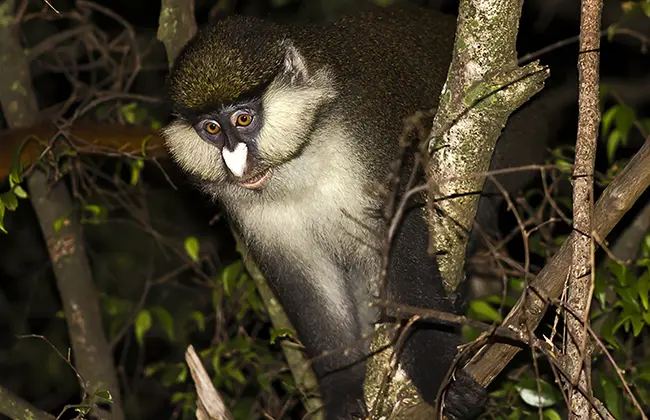
While Mgahinga National Park is one of the smallest parks in Uganda, it’s one of the most scenic. Featuring three volcanoes, crater lakes, rainforests, and tall bamboo forests, this park is the only other place (after Bwindi) where you can find the mountain gorilla. The endangered Golden monkeys, buffalo, elephants, leopards, spotted hyenas, bushbucks, giant forest hogs and bird species can also be seen here. The park is an excellent choice for single-day hiking safaris. Travellers can hike up any one of the volcanoes in one day.
Queen Elizabeth National Park
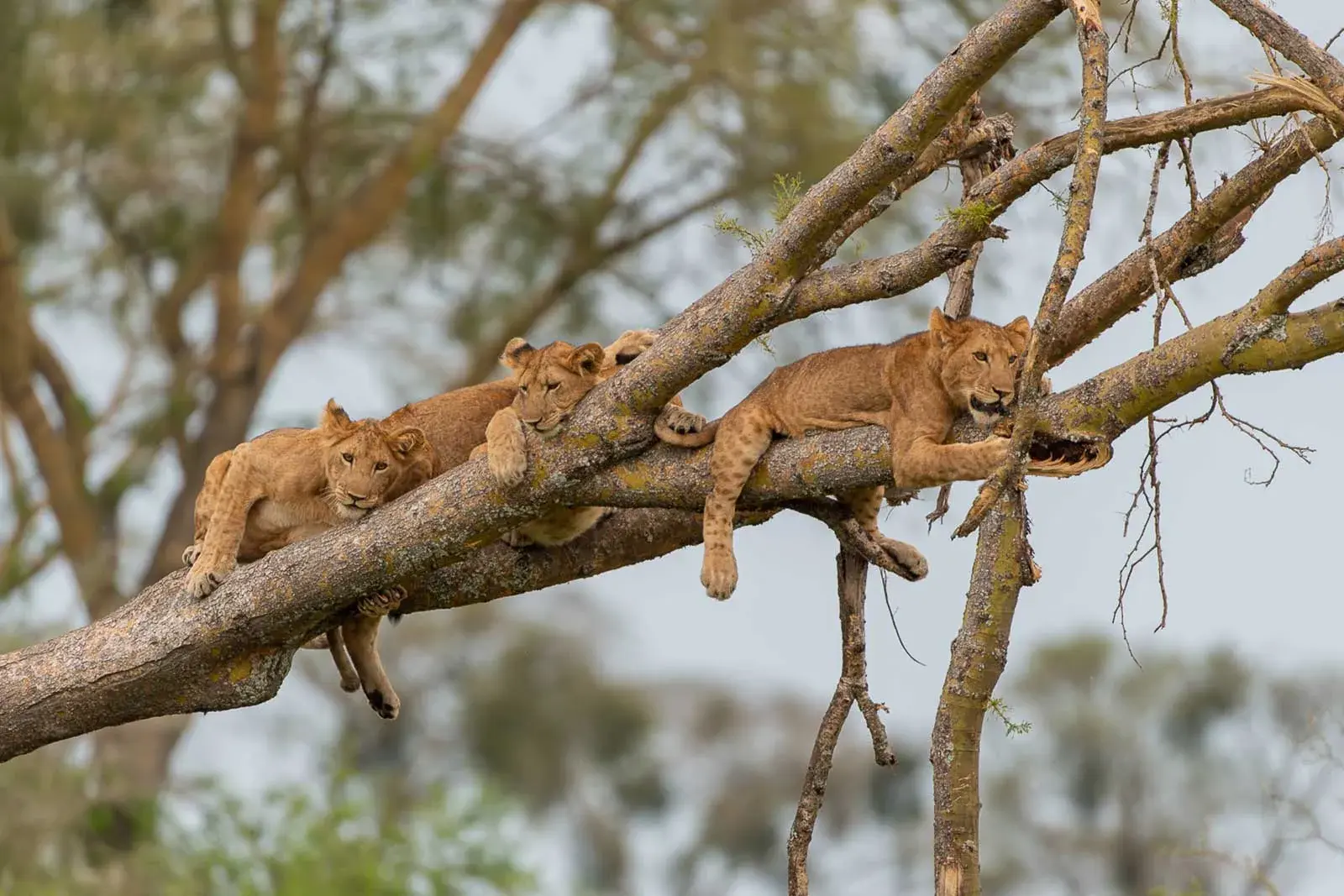
The Masai Mara and Serengeti aren’t the only places where you can spot a lion. The Kesenyi Plains in Queen Elizabeth National Park hosts these majestic creatures and on an afternoon drive you just might spot them lazing contentedly up a tree. Besides lions, the park hosts an elephant population, buffalo, hyenas, leopards, and over 600 bird species.
The Kazinga Channel is a stunning waterway and a key feature of Queen Elizabeth National Park. This fresh water river is a hippo haven hosting the largest hippo population the world over. Nile crocs lurk in these waters while elephants, buffalos, and other animals come to this river for a drink. Most visitors enjoy the park’s breathtaking views via boat cruises.
Murchison Falls National Park
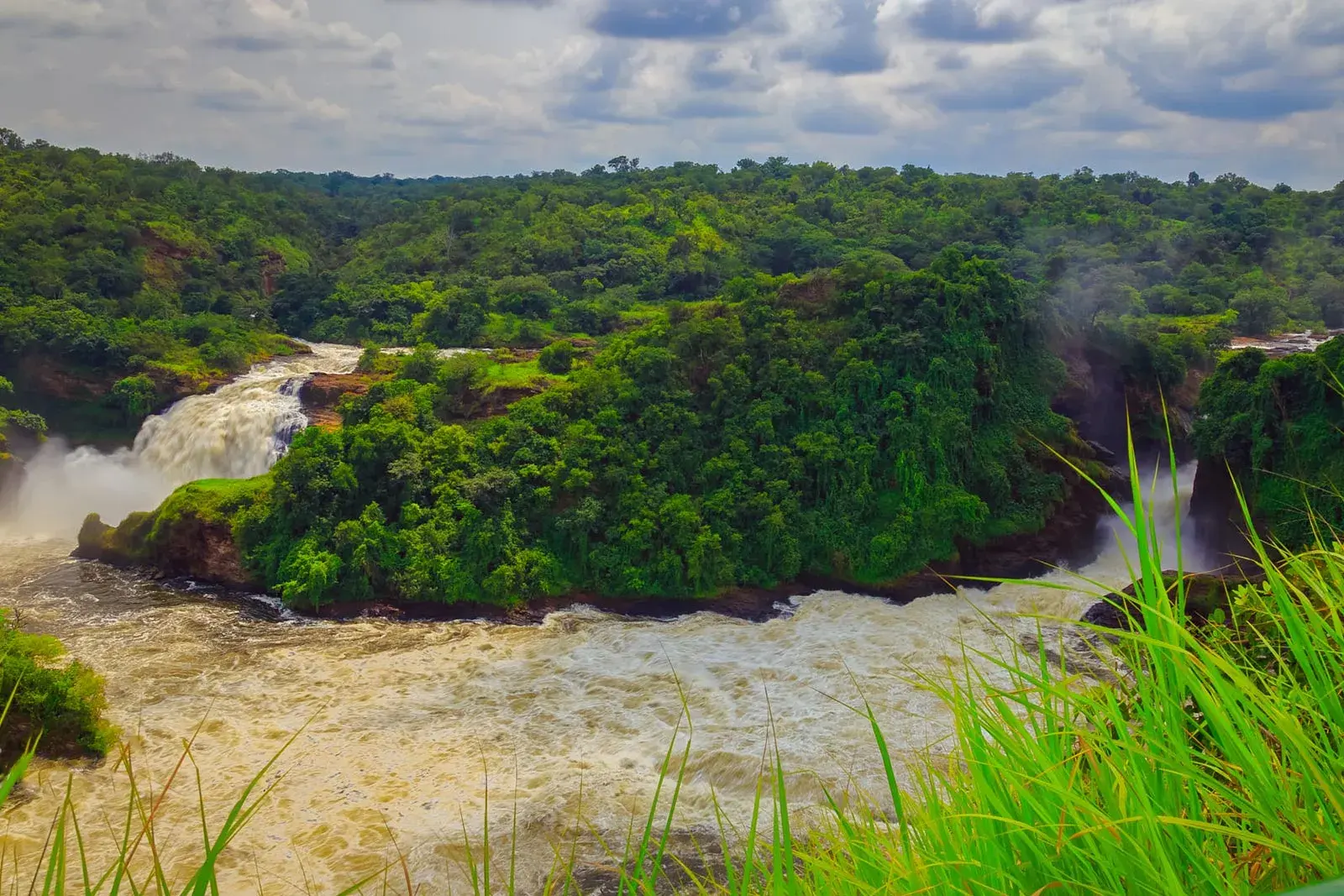
Established in 1952, the Murchison Falls National Park is the largest and oldest of Uganda’s parks. Although the park was set up a year later, it had already gained international recognition a year earlier with the shooting of the 1951 “The African Queen” film starring Humphrey Bogart and Audrey Hepburn. The park’s main attraction, the Murchison Falls, is where the Nile River squeezes into a narrow gorge before plunging thunderously into the “Devil’s Cauldron” below. The river’s energetic cascade transforms into a broad stream that flows quietly allowing wildlife to quench their thirst there.
The park’s habitat is diverse featuring palms, acacia trees, riverine woodlands, forest patches and rivers. An elephant population alongside buffalos, giraffes, jackals, hyenas, warthogs, hippos, Nile crocs, and birds can be seen here. Primates like blue, Patas, olive baboons, chimpanzees, and Colobus monkeys also live in this park. Travellers visiting Murchison Falls National Park can enjoy game drives, white water rafting, nature walks, boat cruises, fishing, birding, and Chimpanzee trekking.
Kidepo Valley National Park
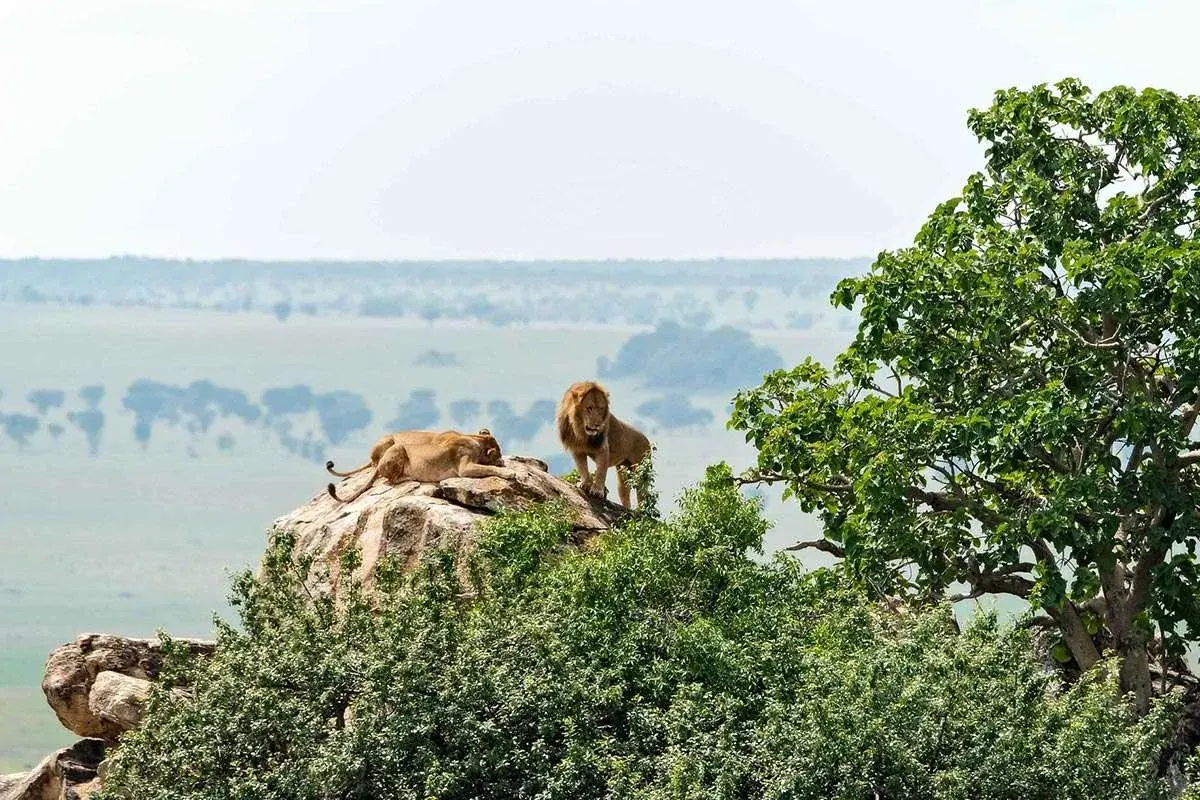
The remote Kidepo Valley National Park is one of the most isolated parks in Uganda, which has allowed it to retain its pristine wilderness feeling. Its ecosystem is mainly savannah grasslands that stretch out to the distant mountain ranges. Excellent views to take in while sipping a delicious cup of Uganda safari tea.
The park has an impressive big cat population and is ideal for travellers seeking lion safari destinations. Here you may have higher chances of spotting lions, cheetahs, and leopards. The Kalabe Rock is a favourite lounge space among lions offering excellent views of the pride lands.
At Kidepo Valley, you can enjoy drives to spot zebras, hartebeests, Uganda kobs, bat-eared foxes, black-backed jackals, hyenas, hunting dogs, and elephants. Guided walks and hikes can take you to Namamukweny Valley, Narus Valley or Kidepo Plains while birding and photography opportunities are aplenty.
Other notable safari destinations in Uganda include:
- The Sipi Falls
- Kibale National Park
- Lake Mburo National Park
- Rwenzori Mountains National Park
- Budongo Forest Reserve
- Semuliki National Park
The Majestic Mountain Gorillas: A Trekker’s Dream

Gorilla trekking is an exhilarating wildlife experience and Uganda offers an unparalleled opportunity to come face-to-face with these magnificent creatures. The misty forests of Bwindi Impenetrable Forest National Park and Mgahinga National Park are the places to visit for these encounters.
The most ideal months for gorilla trekking are during the dry seasons—December to February and June to August. Your journey will begin with a trek through the dense and mist-laden forests whose impenetrable nature adds to the thrill of the hunt. Once your guides spot a gorilla family, they will allow you to spend some time with them, observing their behaviour. While gorillas aren’t aggressive and will go about their usual business even in the presence of humans, it’s important to maintain a safe distance as instructed by your guide.
Spectacular Game Drives and Boat Safaris

Uganda’s national parks present numerous other safari opportunities. Murchison Falls and Queen Elizabeth National Park are premier wildlife destinations offering traditional game drives and boat safaris, teeming with wildlife and unique bird species. Day and night game drives take you through golden grasslands in search of lions, elephants, antelope species, and other prey and predators. Early morning and late afternoon boat safaris are magical and offer encounters with aquatic wildlife like hippos and crocodiles in their natural habitats.
Primates Parade: Chimpanzee Trekking and Golden Monkey Encounters
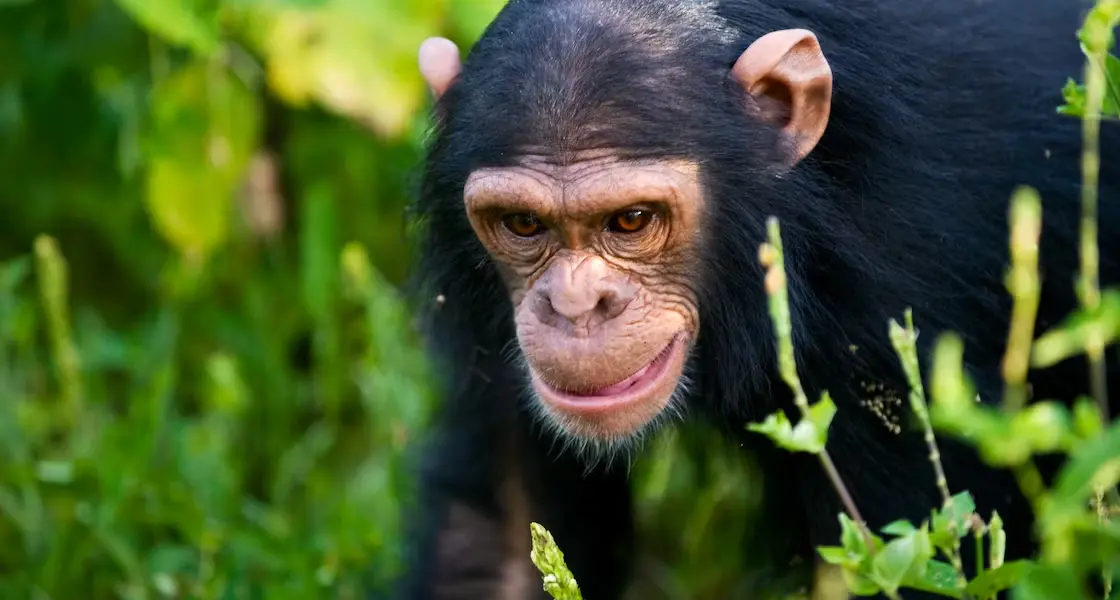
While mountain gorillas command the limelight in Uganda, the country’s primate diversity extends far beyond these gentle giants. Uganda is home to an incredible variety of primates, including:
- Chimpanzees
- Golden monkeys
- Baboons
- Colobus monkeys
- Vervet monkeys
- Red-tailed monkeys
- Blue monkeys
- Grey-cheeked mangabeys
- L’Hoest’s monkeys
- Olive baboons
This abundance of primates offers visitors the opportunity to experience engaging treks while observing these intriguing creatures. The lush forests of Kibale, are known as the ‘Primate Capital of the World’ and the best place to track chimpanzees. Followed by Murchison falls national park and Queen Elizabeth national park. Virunga Mountains in Mgahinga National Park are great golden monkey encounters while Patas Monkeys can be spotted in Kidepo Valley and Murchison Falls National Park.
As with mountain gorillas, caution must be exercised around these primates. They are intelligent and constantly swing from tree to tree which can make for an exciting adventure. Be careful not to make too much noise or provoke primates as they can turn aggressive.
Beyond Wildlife: Cultural Immersion and Scenic Splendour
A Uganda safari extends beyond wilderness encounters to immersing oneself in Africa’s deep-rooted cultural heritage. The country is home to diverse tribes, each with its unique customs, traditions, and way of life. From the Baganda in the central region to the Banyankole in the southwest and the Karamojong pastoralists the country offers a rich tapestry of cultural experiences.
But Uganda’s allure isn’t just confined to its wildlife and cultural heritage. The country is also blessed with breathtaking landscapes that are as diverse as beautiful. Some of the stunning landscapes in Uganda include:
- The snow-capped Rwenzori Mountains
- The shimmering crater lakes
- The powerful waterfalls
- The vast savannahs of Queen Elizabeth National Park
Engaging with the Local Tribes and Traditions
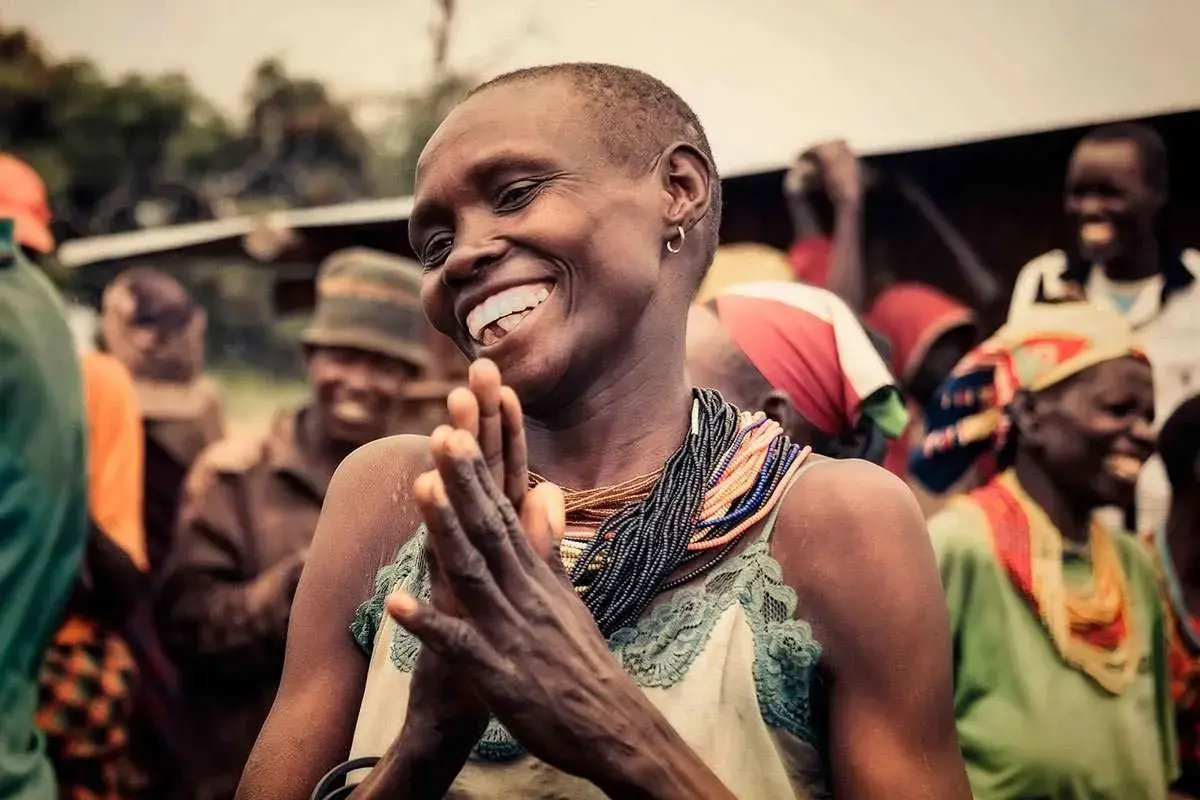
Engaging with Uganda’s local tribes offers a fascinating insight into the country’s rich cultural tapestry. The Karamojong and the IK tribe live near Kidepo Valley National Park and possess similar qualities to the Maasai people who inhabit the Masai Mara and Serengeti regions.
These tribes have retained their traditions over the centuries but unlike the Karamojong and Maasai, the IK tribe moved from pastoralism to hunting, gathering, and subsistence farming. Similarly, the Batwa tribe (a pgymy tribe) have shared the Bwindi impenetrable forest with mountain gorillas for centuries. Visitors can participate in a wide range of cultural activities, including:
- Attending traditional dance and music performances
- Participating in craft workshops
- Experiencing cultural festivals
- Food tasting experiences
These interactions offer a unique opportunity to learn about the tribe’s history, customs, and way of life. They also provide a platform for cultural exchange, fostering mutual respect and understanding between visitors and the local community.
Revel in the Landscapes: Lakes, Waterfalls, and Mountain Ranges
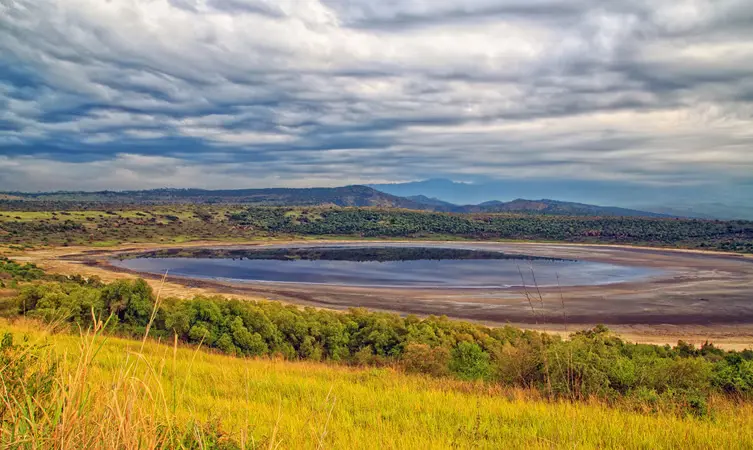
Uganda’s landscapes are a feast for the senses. The country’s topography is incredibly diverse, including
- Snow-capped mountain ranges
- Lush forests and water falls
- Vast savannahs
- Shimmering lakes
- Volcanic Explosion Crater Lakes
The Rwenzori Mountains, also known as the ‘Mountains of the Moon,’ are one of Uganda’s most stunning landscapes. This mountain range is home to six of Africa’s highest peaks, including Mount Stanley, which reaches an elevation of 5,109 meters. Trekking in the Rwenzoris is a challenging but rewarding adventure, offering breathtaking views of the surrounding landscapes.
Equally enchanting are Uganda’s lakes, notably Lake Victoria, Lake Albert, and Lake Edward. These lakes are a haven for a variety of wildlife and offer recreational activities like boating and bird-watching. Lastly, don’t miss the chance to witness the powerful spectacle of Murchison Falls, Sipi Falls, and Karuma Falls, where the raw power and beauty of nature are on full display.
Seasonal Insights: When to Embark on Your Uganda Safari Adventure
Planning your Uganda safari involves more than just deciding on destinations and activities; timing your visit right is equally important. Despite Uganda’s equatorial location providing a fairly stable climate throughout the year, annual seasonal changes can still influence your safari experience.
Uganda experiences two dry seasons: from December to February and from June to August. These periods are considered the best times for wildlife viewing. During the dry seasons, animals are more concentrated around water sources, making it easier to spot them. The dry season is also the best time for gorilla and chimpanzee trekking as the weather conditions are ideal and the trekking paths are less slippery. However, it’s always a good idea to bring a raincoat and waterproof boots, as rain showers can occur even during the dry season.
Tailoring Your Uganda Safari: Duration and Itinerary Planning
Designing an ideal Uganda safari is an exhilarating process that requires customizing your journey according to your interests, available time, and budget. Whether you’re keen on a short trip or a longer itinerary that encompasses the full range of experiences, Uganda has something for every traveller.
The duration of your safari could range from a condensed 3-day gorilla trekking trip in Bwindi to a comprehensive 10-day exploration that includes:
- Wildlife safaris in Queen Elizabeth National Park and Kidepo Valley National Park
- Chimpanzee tracking in Kibale Forest National Park
- Cultural tours to tribal villages close to national parks
- Scenic drives and sampling local cuisines
We recommend creating an itinerary that balances wildlife viewing with other activities like cultural visits, scenic drives, and relaxation time. This diversity ensures a rounded experience that captures the very essence of Uganda.
Savouring the Flavors: A Taste of Uganda’s Cuisine and Tea

A Uganda safari delights not only your senses but also your taste buds. Matoke (cooked bananas wrapped in leaves) is Uganda’s national dish enjoyed on its own or accompanied by groundnut soup. Other local delicacies include cassava, sweet potatoes, yams, beans, peas, and pumpkins.
Over the years the country has added continental cuisines such as Indian, Italian and Chinese resulting in mouth-watering dishes to satisfy even the most discerning foodie. These foods are typically starch-heavy so you may want to take a walk after your meal.
One of the highlights of Ugandan cuisine is the country’s tea. Known as ‘Uganda Safari Tea,’ this drink is made from natural loose leaves that infuse fast and offer a mild and sweet taste. A cup of Uganda Safari tea is a perfect way to start your day or relax after a thrilling day of wildlife viewing.
Whether you’re sampling local delicacies like the Rolex (a type of street food) or sipping on a delicious cup of Uganda safari tea, the country offers a culinary adventure that complements its wildlife and cultural experiences.
Responsible Tourism: Conservation Efforts and Community Support
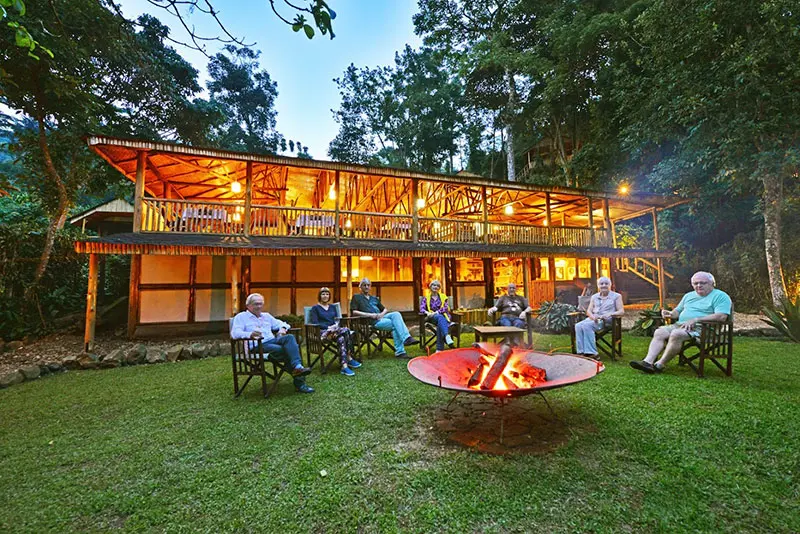
Tourism in Uganda is closely linked with conservation initiatives and community support. This approach, known as ‘responsible tourism,’ seeks to:
- Minimize the negative impacts of tourism
- Maximize the positive impacts of tourism
- Make a positive difference to the local community and environment
- Offer an enriching travel experience for tourists
Responsible tourism is deeply embedded in Uganda’s safari industry. parks such as Bwindi Impenetrable National Park and Mgahinga National Park were established to protect mountain gorillas and other primates whose numbers were diminishing rapidly.
Several regulations have been put in place such as charging primate tracking permits and limiting time spent with these animals to one hour only. The funds are channelled into primate protection while the time limit helps minimise distress and the risk of diseases. A simple common cold can be catastrophic for the animals.
Supporting local communities is a fundamental aspect of responsible tourism. There are several women’s craft cooperatives where the local women weave baskets, do beadwork, and make pots for sale to tourists. Entrepreneurial individuals and communities have also built local guesthouses and lodges where visitors can stay while touring the parks. As a visitor, you can help develop the local people’s economic capacities by supporting local businesses and promoting sustainable practices.
Part of responsible travel involves reusing and recycling things as much as possible, enjoying natural wonders without destroying them and avoiding feeding wild animals. Identify correct garbage disposal places and avoid trashing streets, roads, hiking trails, parks, and any other place.
Navigating Uganda: Transportation Tips and Safari Logistics
Travelling through Uganda can be an adventure in its own right. The country offers a variety of transportation options, including:
- Taxis
- Buses
- Boda bodas (motorcycle taxis)
- Private cars
However, for comfort and convenience, most tourists prefer to hire a private vehicle or use transport services provided by safari operators. To make your journey smooth you’ll want to make an early booking to ensure you can secure solid accommodations and receive gorilla trekking permits in advance.
Summary
A Uganda safari offers an unforgettable blend of wildlife encounters, cultural experiences, and stunning landscapes. From thrilling gorilla trekking to vibrant cultural interactions and stunning landscapes, Uganda is an excellent safari destination for nature lovers and adventure seekers alike. So why wait? Start planning your Uganda safari adventure today and prepare for an experience that will stay with you long after you’ve left the Pearl of Africa.
Frequently Asked Questions:
Next, we answer the most frequently asked questions about Uganda safari tours.
Is Uganda Good for Safaris?
Yes, Uganda is great for safaris. Thanks to its lush rainforests and savannah parks, the country offers a diverse safari experience that you may not find in other countries. You can enjoy game drives, boat safaris, hiking opportunities, and guided walking safaris.
How Much Does a Safari Cost in Uganda?
The average safari cost in Uganda is around US\$ 200 per person per day. Permits for gorillas and golden monkeys cost US$ 700 and US$ 60 respectively per person per hour. Budget accommodation starts from just US$ 100 per night!
What Are the Best Months for Safari in Uganda?
Experience the thrill of viewing wildlife in Uganda during its two dry seasons – from December to February, and from June to August. The wetter months may not be practical for visiting the rainforests but you can still enjoy game viewing and relaxation at the parks.
Does Uganda Tea Have Caffeine?
Yes, Uganda tea does contain caffeine, although it has significantly less than coffee.
What Are the Must-See Destinations in Uganda?
You can experience a thrilling gorilla trekking in Bwindi Impenetrable National Park or observe various animals on game drives in Queen Elizabeth National Park. Better yet, come face-to-face with chimpanzees in Kibale Forest National Park. These are the must-see destinations in Uganda!
